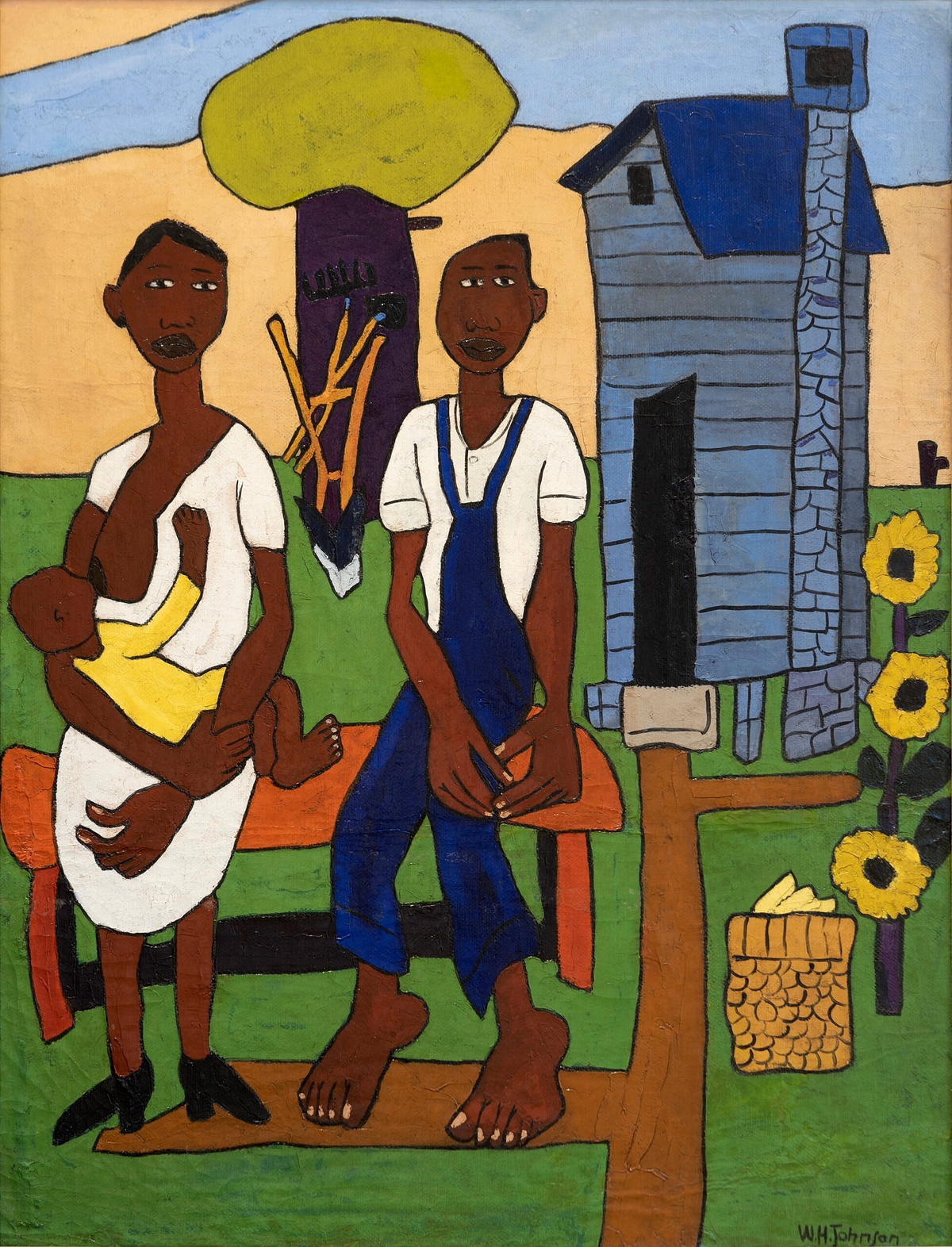Nashville
Frist Dives Into Southern Side Of Modern
by | Mar 25, 2024 3:23 pm
Post a Comment | E-mail the Author
Posted to: Visual Art

William H. Johnson
Evening.
The Frist Art Museum
“Southern/Modern” Exhibition
Through April 28
“I always like to tell people it’s the best work of art in the building,” said the man sitting at the guest services desk of The Frist Art Museum. He gestured to the grandeur of the lobby that surrounded him. Built as a post office in 1933, the space was indeed an art deco masterpiece with its stainless steel flourishes. However, it had stiff competition in the Frist’s “Southern/Modern” exhibition that I’d come to see.
The modernist lobby set the stage perfectly. The show encompasses over 100 works ranging from 1913 to 1955, either by Southern artists or that speak specifically to the Southern experience at the time. Organized into subjects — “Southerners,” “Landscape as Metaphor,” “Religion and Ritual,” “Segregation and Jim Crow,” “Cities and Industry,” “Labor,” and “Planting New Seeds: Colonies and Schools” — the exhibition centers heavily around the themes of race, class, and land.
The first room, “Southerners,” narrows its focus to depictions of everyday life, from people making music to passing unoccupied leisure time to making shopping trips. Much like in Southern music and literature, the art aims to capture the magic in the mundane that swirls in the South — the haunted oddities that exist in a place so twisted, dark, and beautiful.
This undercurrent is carried throughout the various rooms of the exhibition. The vibrant opening piece — Evening, by William H. Johnson — comes from a series that “depicts various times of day in the lives of Black Southerners,” and mixes modernism and Cubism with references to folk art stylings.
It was in this first room that I had my first of several encounters with the awkwardness that is being a 21st-century viewer of works by 20th-century White artists attempting to depict Black Southerners and the Black experience. This is an inescapable and perhaps characteristic rub in the Southern arts generally, but it makes a frequent appearance in the Frist’s “Southern/Modern.” The question of what is stereotyping versus what is representation comes up often. Some works veer dangerously close to the artistic equivalent of blackface. Charles Shannon’s painting Saturday Night is one such work that may have found those limits, as it carries a strong stench of caricature.

James A. Porter
When the Klan Passes By.
Other parts of the show move beyond this problem, and complicated undertones when depicting race and class abound throughout the exhibition. In the “Labor” and “Jim Crow” rooms, especially, many works address the subject head on — such as James A. Porter’s When the Klan Passes By, Louis Mallou Jones’s Mob Victim, Robert Gwathmey’s Sunny South, and Romare Bearden’s The Rites of Spring, to name a few.
“Southern/Modern” also brings Black artists, like Porter and Jones, into the canon of Southern modernist art from which they have been historically excluded in larger museum spaces. Furthermore, it leaves space for Black artists — such as Eldzier Cortor, John Biggers, and Alma Thomas — who were illustrating the lives and experiences of Black people without addressing the White population at all.

Neil Choate Jones
Georgia Red Clay.
The “Landscape as Metaphor” portion of the exhibition, maybe obviously, features an array of stunning modernist landscape paintings. Many, if not all, of the paintings on display in this area use light and color to depict the degree to which the Southern landscape is alive, almost sentient — a leading character in the Southern story. Hale Aspacio Woodruff’s Southland depicts a desolate but kaleidoscopic landscape meant to be symbolic of the toll the land has taken on the Black population through the centuries. Nell Choate’s Georgia Red Clay is both joyful and foreboding, with whimsical imagery offset by a dark and ominous sky. On the whole, it was interesting to observe the difference in the Southern landscapes painted by Southern artists versus artists from other regions, with the former providing a much more nuanced tone than the latter. The use of magical realism abounds.

Malvin Gray Johnson
Roll Jordan Roll.
“Religion and Ritual” features works celebrating and exploring the Black Christian church, specificially. The role of music and spirituals was a common focus, such as is Malvin Gray Johnson’s Roll Jordan Roll.
That said, as much as the Frist begins to include artists who have been excluded, I was disappointed by the clear continued lack of respect for folk art — which is abundant in the Southern art world and lends itself quite well to the ideas of modernism. Many modernist works have taken direct inspiration from folk art, and an exhibition telling the story of modernism in the South would have been the perfect avenue to include such works, in turn opening up the field to a more diverse range of experiences. There were no indigenous artists represented that I’m aware of, very few women, and despite best efforts, many a White man from the Northeast. That being said, “Southern/Modern” is a one-of-a-kind exhibition that showcases the breadth of the American South’s contribution to the canon of modern art.